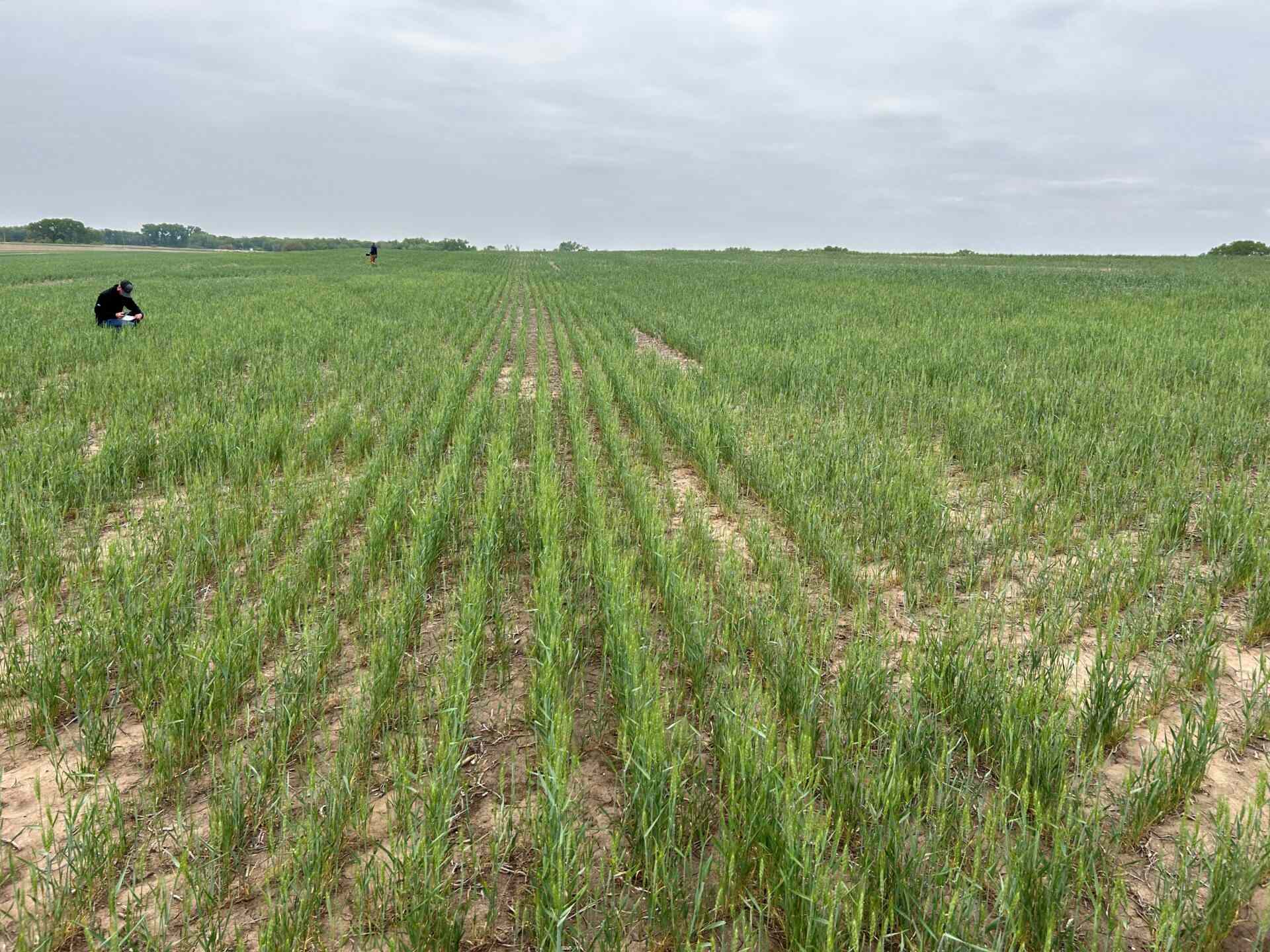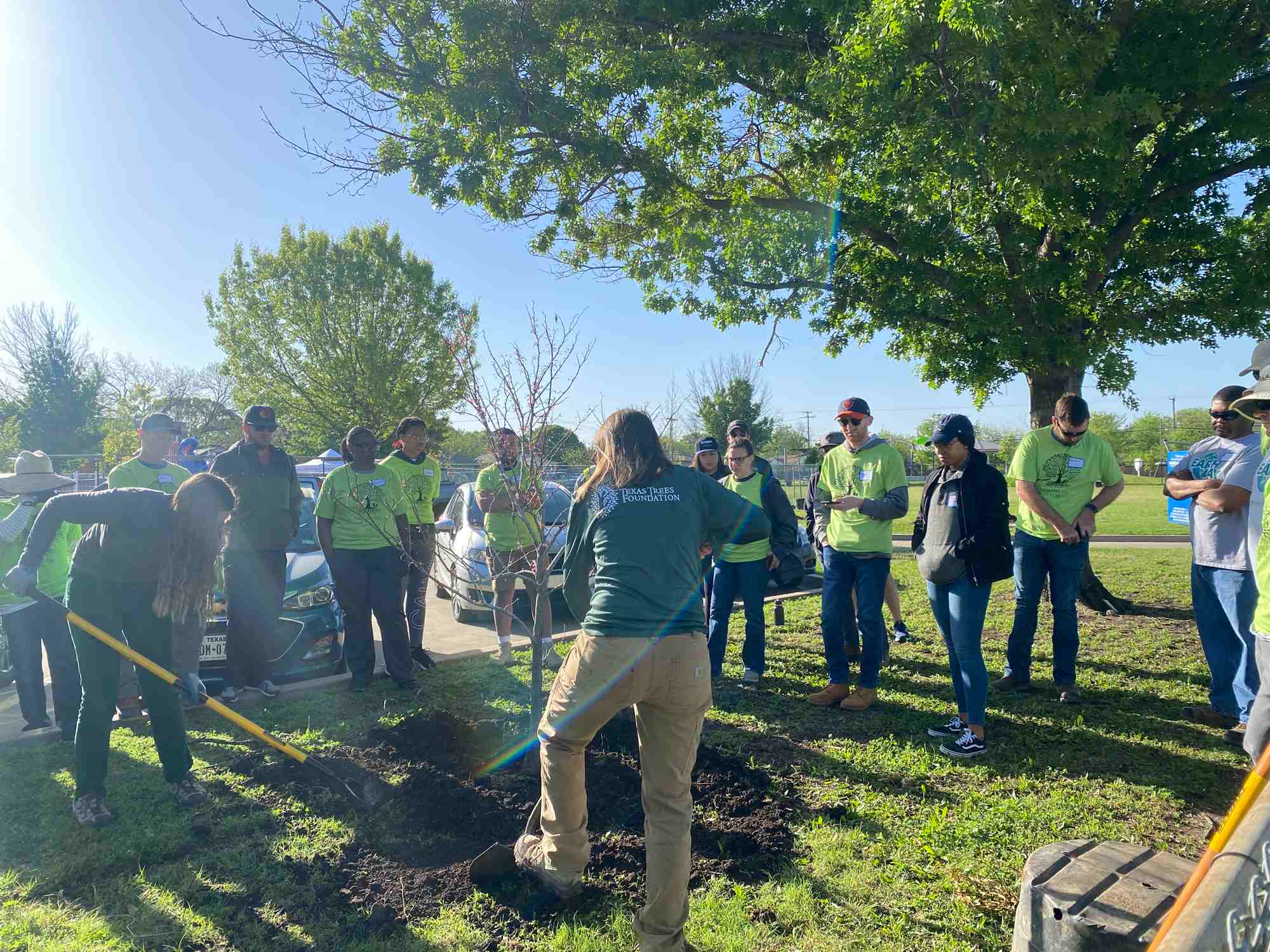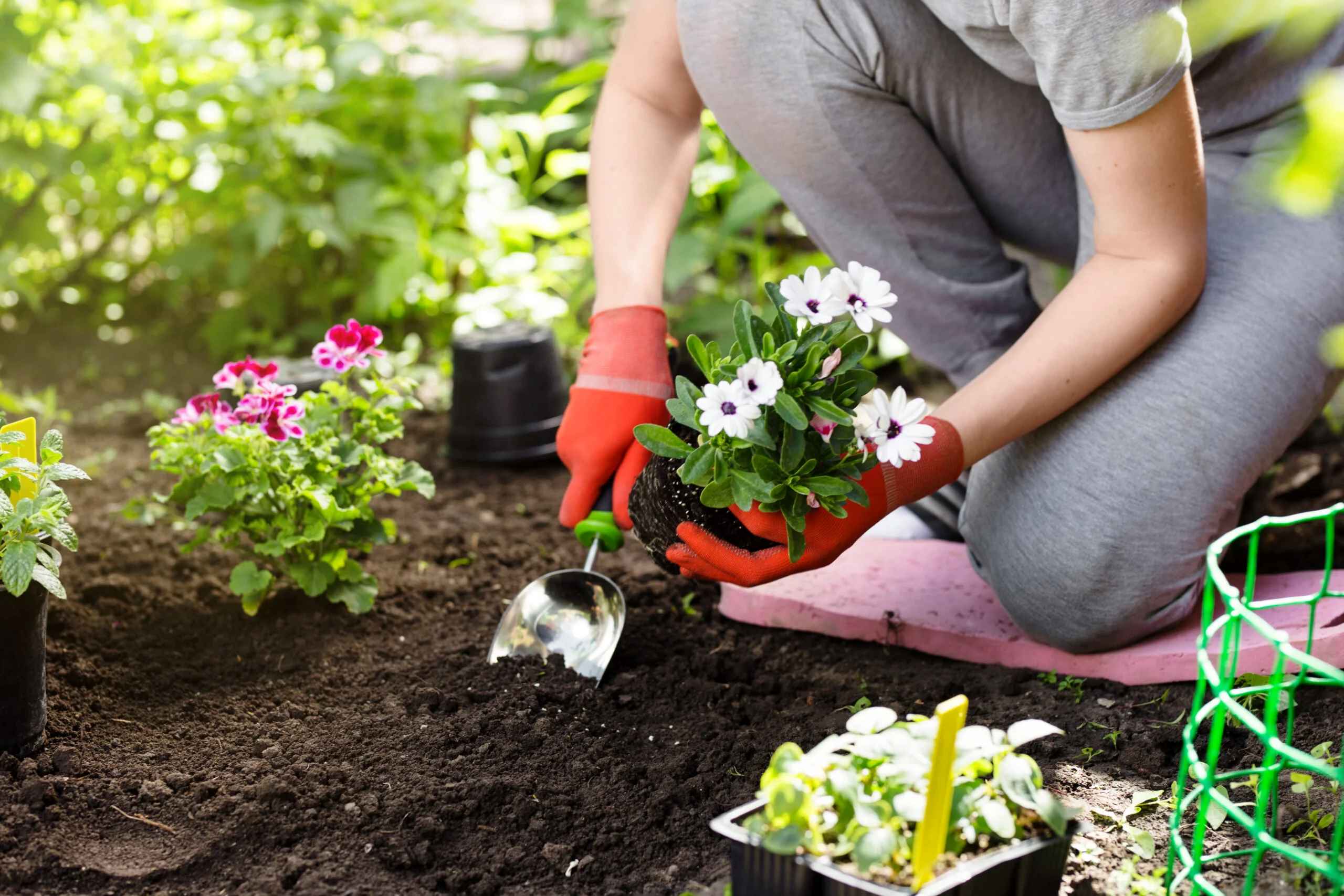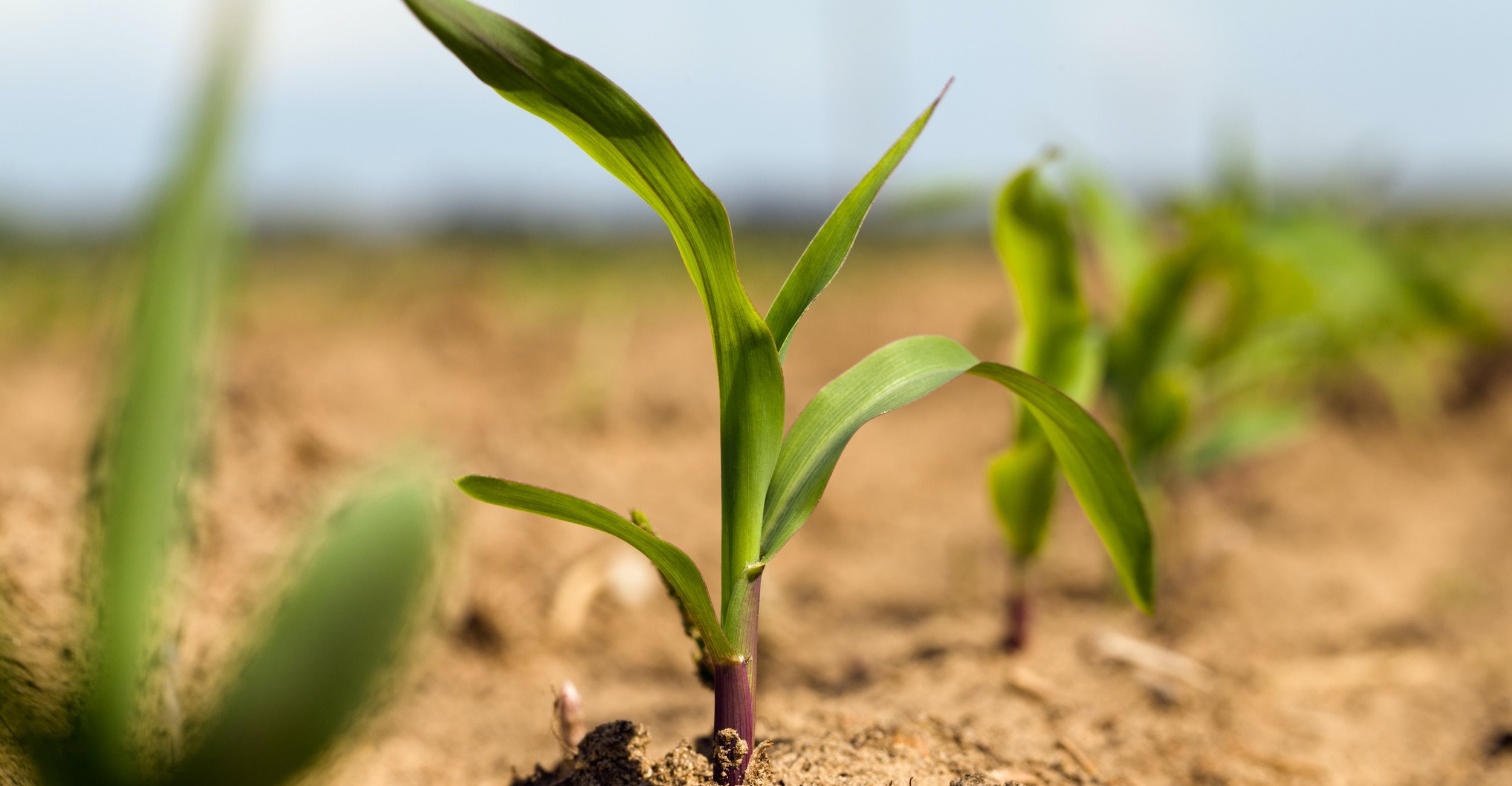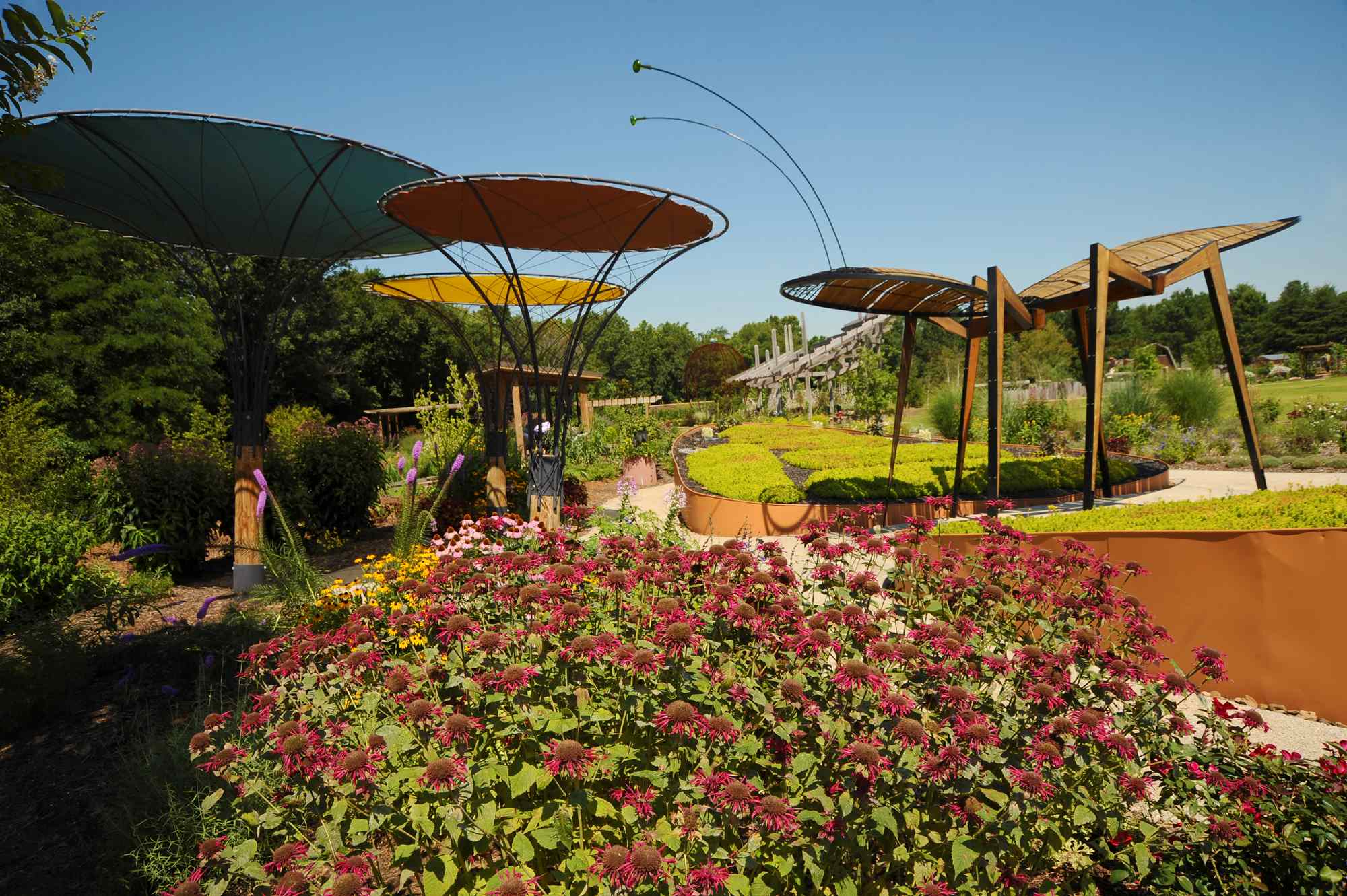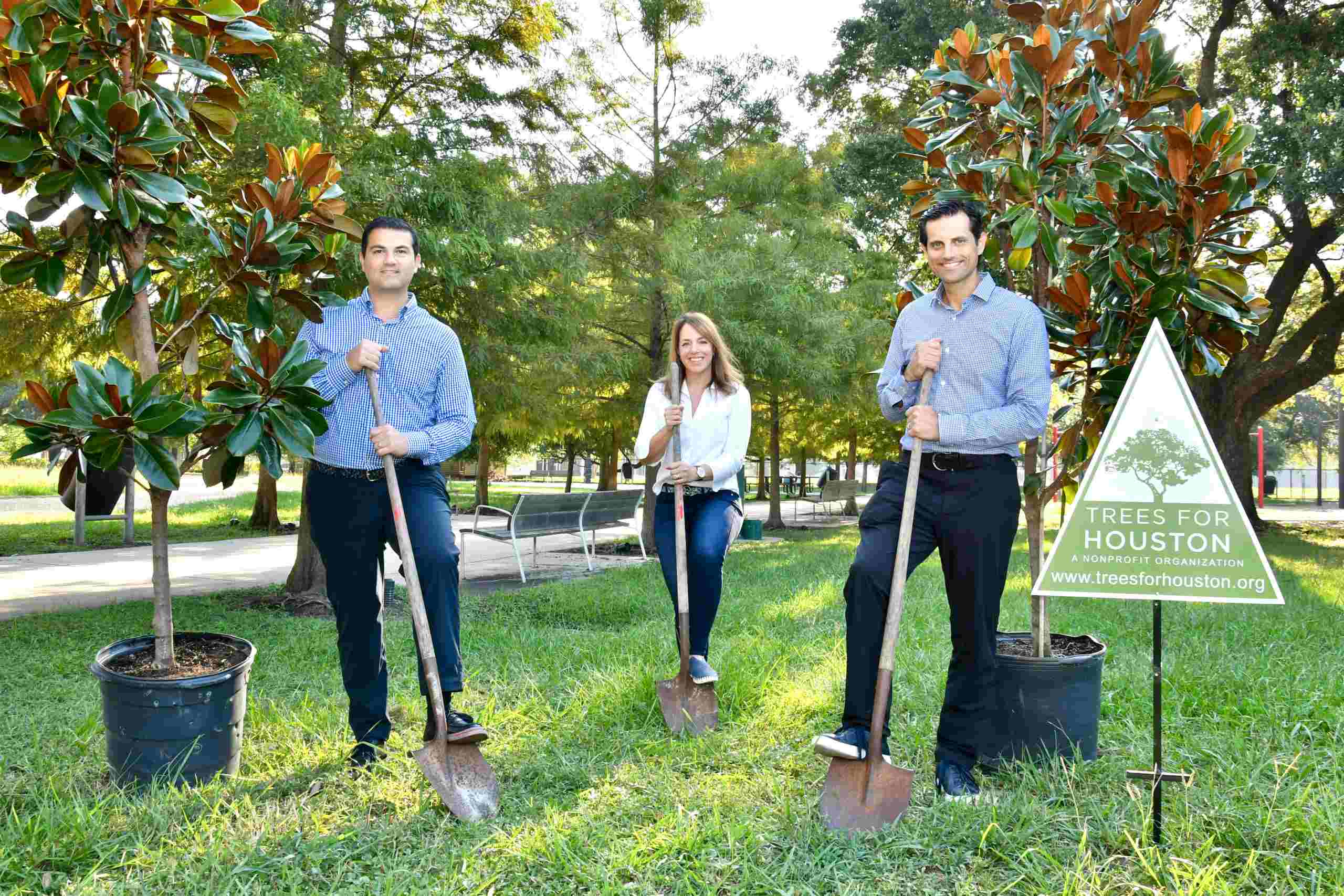Home>Gardening Basics>Understanding Soil>What Planting Zone Is Richmond Virginia
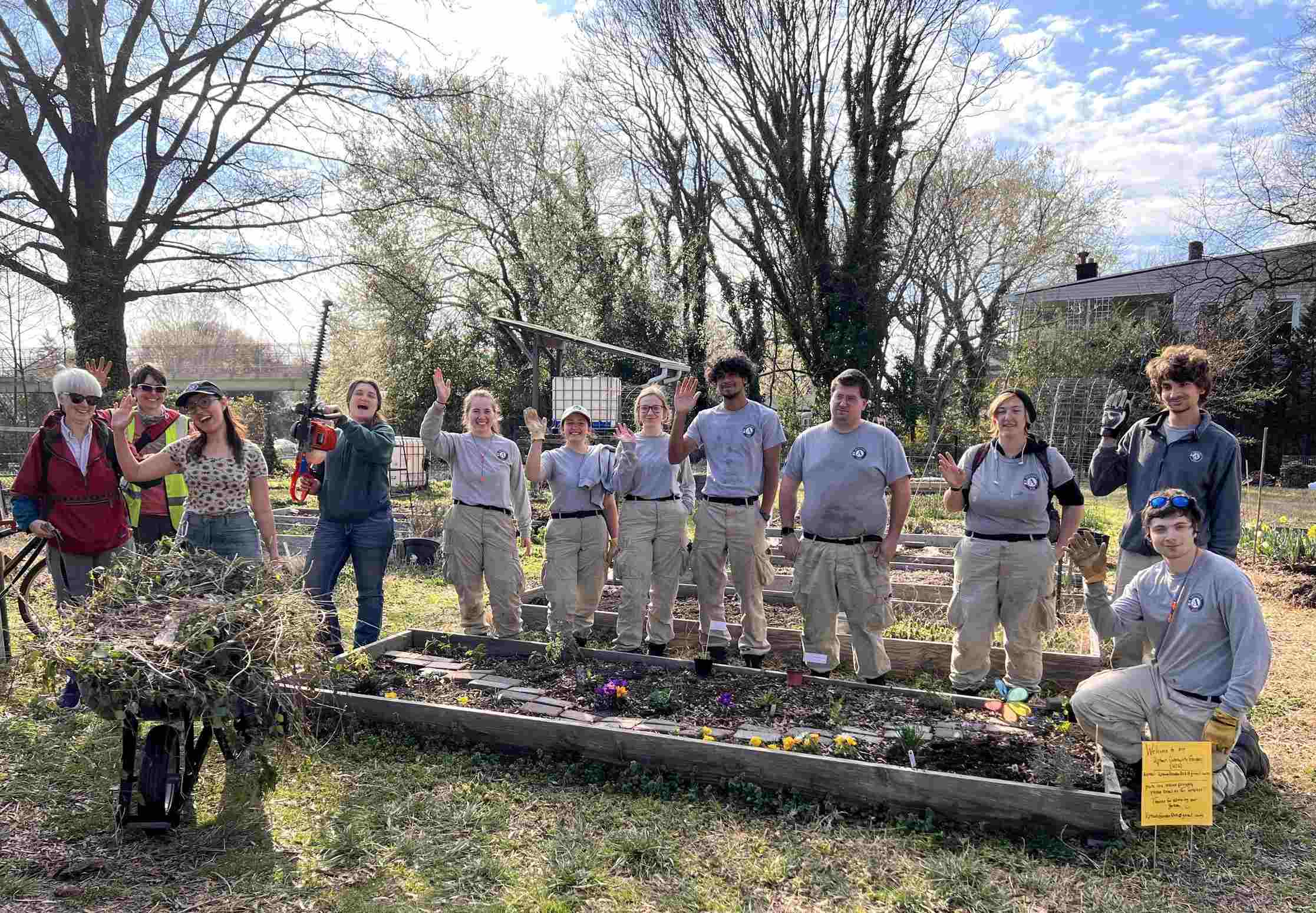

Understanding Soil
What Planting Zone Is Richmond Virginia
Modified: January 22, 2024
Find out the planting zone for Richmond, Virginia and understand the importance of soil quality. Discover the ideal conditions for a successful garden with our comprehensive guide on understanding soil.
(Many of the links in this article redirect to a specific reviewed product. Your purchase of these products through affiliate links helps to generate commission for Chicagolandgardening.com, at no extra cost. Learn more)
Table of Contents
- Introduction
- Understanding Planting Zones
- The Importance of Planting Zones
- Factors Affecting Richmond, Virginia’s Planting Zone
- Determining Richmond, Virginia’s Planting Zone
- Overview of Richmond, Virginia’s Planting Zone
- Common Plants for Richmond, Virginia’s Planting Zone
- Gardening Tips for Richmond, Virginia’s Planting Zone
- Conclusion
Introduction
Welcome to Richmond, Virginia, a city known for its rich history, picturesque landscapes, and vibrant community. If you’re a gardening enthusiast or simply curious about plants, understanding the concept of planting zones is essential. Planting zones provide valuable information about which plants can thrive in specific geographic regions, taking into account factors like temperature and climate.
In this article, we will explore the planting zone of Richmond, Virginia, and discuss why it is crucial for successful gardening. We will delve into the factors that influence the city’s planting zone and guide you on determining the specific zone for your garden. Additionally, we will provide an overview of common plants suitable for Richmond’s planting zone and share some helpful gardening tips to ensure your green thumb flourishes.
Whether you’re a seasoned gardener or just beginning your horticultural journey, understanding your planting zone will greatly influence the success and longevity of your plants. So let’s dive in and unravel the captivating world of Richmond, Virginia’s planting zone!
Understanding Planting Zones
Planting zones, also known as hardiness zones, are geographical areas that categorize regions based on their climate and weather conditions. The zones are determined by the average annual winter minimum temperatures, which help gardeners identify which plants are most likely to thrive in their specific area.
The United States Department of Agriculture (USDA) developed the Plant Hardiness Zone Map, which divides the country into 13 zones. Each zone is designated by a specific range of minimum temperatures, with Zone 1 being the coldest and Zone 13 being the warmest.
These planting zones play a crucial role in gardening, as they provide valuable information about the suitability of plants for specific locations. By understanding your planting zone, you can select plants that are well-adapted to your climate and therefore more likely to flourish.
Planting zones are not solely reliant on temperature; other factors such as elevation, latitude, proximity to water bodies, and prevailing winds also influence the overall climate of an area. These factors further impact the plants that can be successfully grown in a particular region.
It’s worth noting that planting zones are not fixed and can change over time, especially with the effects of climate change. Therefore, it’s essential to stay updated on any changes to your planting zone and adjust your gardening strategies accordingly.
Understanding planting zones can help inform decisions on planting dates, plant selection, and the overall success of your garden. It provides valuable insights into the types of plants that are likely to thrive in your area, as well as the potential challenges that may arise due to temperature variations.
Now that we have a basic understanding of planting zones, let’s explore why they are essential for gardening success in Richmond, Virginia.
The Importance of Planting Zones
Planting zones play a vital role in determining which plants have the best chance of thriving in a particular region. Here are a few key reasons why understanding your planting zone is crucial:
- Climate Adaptation: Different plants have specific temperature requirements for optimal growth and survival. By knowing your planting zone, you can select plants that are well-suited to the climate of your area. This ensures that your plants can adapt to the local conditions and have a better chance of thriving.
- Plant Selection: Planting zones help you narrow down your choices when it comes to selecting what to grow in your garden. You can refer to plant catalogs or consult with local garden centers that often categorize plants based on their suitability for specific zones. This saves you time and effort in searching for plants that may not be suitable for your area.
- Timing: Knowing your planting zone allows you to plan your gardening activities more effectively. It helps you determine the appropriate time to start seeds indoors, transplant seedlings, or sow directly in the garden. By following the recommended timing for your zone, you can optimize the growing season and give your plants the best chance of success.
- Plant Protection: Understanding your planting zone also helps you anticipate potential challenges and take preventive measures to protect your plants. For example, if you live in an area prone to late spring frosts, you can choose plants that are more frost-resistant or use protective measures like frost blankets to shield your plants and prevent damage.
- Gardening Success: Ultimately, the goal of understanding your planting zone is to increase your chances of gardening success. By growing plants that are well-suited to your climate, you can create a thriving and visually appealing garden. This leads to a more enjoyable gardening experience and a greater sense of accomplishment.
By recognizing the importance of planting zones and utilizing this knowledge in your gardening endeavors, you can ensure that your plants are well-equipped to handle the climate and conditions of your specific region. Next, let’s explore the factors that influence Richmond, Virginia’s planting zone.
Factors Affecting Richmond, Virginia’s Planting Zone
Richmond, Virginia’s planting zone is influenced by several factors that determine its specific climate and growing conditions. Understanding these factors can provide valuable insights into the types of plants that are best suited for the region. Here are some key factors that affect Richmond, Virginia’s planting zone:
- Temperature Range: The average annual minimum temperature is a significant factor in determining a region’s planting zone. In the case of Richmond, Virginia, the region falls within USDA Hardiness Zone 7a, which means that the average minimum temperature ranges from 0°F to 5°F (-17.8°C to -15°C). This influences the types of plants that can tolerate the cold and thrive in the region.
- Humidity: Richmond, Virginia experiences moderate to high humidity levels throughout the year. The moist air can affect plant growth and susceptibility to certain diseases. It’s important to select plants that can handle the humidity or take precautions, such as providing adequate air circulation and avoiding overwatering.
- Precipitation: The amount and distribution of rainfall in a region impact the overall moisture levels of the soil. In Richmond, Virginia, the average annual precipitation is around 42 inches (1067 mm). It’s essential to choose plants that can tolerate both periods of rainfall and drier spells, as well as ensure proper drainage in the garden.
- Sunlight Exposure: The amount of sunlight a garden receives is critical for plant growth. Richmond, Virginia enjoys a good amount of sun, with an average of 213 sunny days per year. It’s important to consider the sun exposure in different parts of your garden and select plants accordingly, ensuring they receive the appropriate amount of sun for their specific needs.
- Soil Composition: The type of soil in a region affects its fertility, drainage, and nutrient content. Richmond, Virginia has a mix of soil types, including sandy loam, clay, and silt. Understanding the soil composition is crucial for proper plant selection and ensuring that the soil conditions can adequately support the chosen plants.
- Microclimates: Within a larger region like Richmond, Virginia, there can be smaller microclimates that exhibit slightly different growing conditions. Factors such as elevation, proximity to bodies of water, and urban heat islands can create variations in temperature, wind patterns, and frost occurrence. It’s important to consider these microclimates when planning your garden and selecting plants.
By taking into account these factors that affect Richmond, Virginia’s planting zone, you can make informed decisions about the plants that are most likely to thrive in your garden’s specific conditions. In the next section, we will discuss how to determine the planting zone for your specific location in Richmond, Virginia.
Determining Richmond, Virginia’s Planting Zone
To determine the specific planting zone for your location in Richmond, Virginia, you can follow these steps:
- Use the USDA Plant Hardiness Zone Map: The USDA provides an interactive online map that allows you to find your planting zone based on your ZIP code or location. By inputting your specific address or ZIP code, you can quickly determine your exact planting zone in Richmond, Virginia.
- Consult Local Extension Offices: Local extension offices or agricultural centers can provide valuable information about the specific planting zones in your area. They can offer localized advice and guidance based on the unique conditions of Richmond, Virginia.
- Observe Local Gardens: Take a walk around your neighborhood or visit nearby gardens to observe the types of plants that are thriving in the area. This can give you an indication of the planting zone and help you select plants that have a proven track record of success in Richmond, Virginia.
- Consider Nearby Microclimates: As mentioned earlier, microclimates can exist within a larger region. Take into account any variations in temperature, sunlight exposure, or wind patterns that may be specific to your immediate area. This can further inform your understanding of the planting zone for your location.
- Consult with Local Gardeners: Local gardening communities and forums can be a valuable resource for determining the planting zone in Richmond, Virginia. Connect with experienced gardeners in the area who can provide firsthand knowledge and advice on gardening in the region.
By utilizing these methods, you can confidently determine the planting zone for your specific location in Richmond, Virginia. This knowledge will empower you to make informed decisions about the selection and care of plants in your garden.
Now that we have established the factors affecting Richmond, Virginia’s planting zone and discussed how to determine it for your location, let’s move on to providing an overview of the planting zone for the region as a whole.
Overview of Richmond, Virginia’s Planting Zone
Richmond, Virginia is located in USDA Hardiness Zone 7a. This means that the average annual minimum temperature in the region ranges from 0°F to 5°F (-17.8°C to -15°C). With its mild winters and warm summers, Richmond offers gardeners a diverse range of plant options to choose from.
In Zone 7a, gardeners can enjoy a moderately long growing season, typically from mid-March to mid-November. This advantageous climate allows for the cultivation of a wide variety of plants, including both cool-season and warm-season crops.
Some common plants that thrive in Richmond’s planting zone include:
- Roses: Richmond’s planting zone creates an ideal environment for roses. Whether you prefer hybrid teas, climbers, or shrub roses, you can find a wide assortment of varieties to beautify your garden.
- Perennials: Many perennial plants, such as daylilies, coreopsis, coneflowers, and phlox, thrive in Richmond’s zone 7a. These plants offer vibrant blooms year after year, adding color and charm to your outdoor spaces.
- Vegetables: Richmond’s climate allows for the successful cultivation of a wide range of vegetables, including tomatoes, peppers, cucumbers, beans, and squash. Both cool-season and warm-season varieties can be grown, giving you the opportunity to enjoy a diverse array of homegrown produce.
- Herbs: You can create a delightful herb garden in Richmond, Virginia’s planting zone. From basil and thyme to rosemary and parsley, a variety of culinary and medicinal herbs can flourish in the region’s climate.
- Native Plants: Embracing native plants in your garden not only adds a touch of local beauty but also benefits the local ecosystem. Native plants, such as Virginia bluebells, trumpet vine, and black-eyed Susans, thrive in Richmond’s planting zone and support local pollinators and wildlife.
It’s important to note that within the zone, microclimates and localized conditions can vary. Be sure to take into account factors like sun exposure, soil composition, and drainage when selecting and placing plants in your garden.
Gardening in Richmond, Virginia’s planting zone provides an abundance of opportunities to create beautiful landscapes and grow a wide variety of plants. By selecting plants that are well-adapted to the region’s climate and conditions, you can enjoy a flourishing garden year-round.
With an understanding of the planting zone and the types of plants that thrive in Richmond, Virginia, let’s explore some helpful gardening tips specific to the region.
Common Plants for Richmond, Virginia’s Planting Zone
Richmond, Virginia’s planting zone offers a diverse range of plants that can thrive in its mild winters and warm summers. Here are some common plants that are well-suited for gardening in Richmond’s planting zone:
- Roses: Roses are a popular choice for Richmond gardens. Hybrid teas, climbers, and shrub roses all do well in the region’s planting zone. With their beautiful blooms and fragrance, roses add elegance and charm to any garden.
- Perennials: Richmond’s zone 7a allows for the successful cultivation of various perennial plants. Consider planting daylilies, coreopsis, coneflowers, phlox, and black-eyed Susans for their vibrant colors and ability to come back year after year.
- Vegetables: Richmond’s climate supports the growth of a wide range of vegetables. You can plant both cool-season and warm-season crops. Tomatoes, peppers, cucumbers, beans, squash, and leafy greens like kale and lettuce are just a few examples of the vegetables that thrive in the region.
- Herbs: Herb gardens are popular in Richmond, Virginia’s planting zone. You can grow a variety of herbs, such as basil, thyme, rosemary, parsley, and mint. These flavorful herbs can be used in cooking and are a delightful addition to any garden.
- Native Plants: Embracing native plants in your garden not only adds beauty but also provides important habitat and food sources for local wildlife. Consider incorporating native plants like Virginia bluebells, trumpet vine, butterfly weed, and milkweed, which have adapted to Richmond’s climate and support pollinators.
When choosing plants for your Richmond garden, it’s essential to consider factors such as sun exposure, soil conditions, and water requirements. Each plant has specific needs, and understanding those requirements will help ensure their success in your garden.
Before planting, prepare your soil by amending it with organic matter to enhance its fertility and drainage. Regular watering is crucial, especially during periods of drought or dry spells. Mulching around plants can help retain moisture and suppress weeds.
Practicing good garden maintenance, such as regular pruning, deadheading spent flowers, and monitoring for signs of pests or diseases, will help keep your plants healthy and thriving. Additionally, paying attention to the recommended planting times and spacing requirements for each plant will promote optimal growth and prevent overcrowding.
Lastly, be open to experimenting and trying new plants that may thrive in your Richmond garden. Gardening is a journey of learning and discovery, and embracing the uniqueness of your planting zone allows you to explore a wide range of beautiful and rewarding plants.
Now armed with knowledge about common plants for Richmond, Virginia’s planting zone, let’s delve into some useful gardening tips specifically tailored to this region.
Gardening Tips for Richmond, Virginia’s Planting Zone
Gardening in Richmond, Virginia’s planting zone offers a multitude of opportunities to create a thriving and beautiful garden. Here are some helpful tips to ensure success in your gardening endeavors:
- Know Your Planting Zone: Understanding your planting zone is crucial for selecting the right plants and planning your garden activities. Refer to the USDA Hardiness Zone Map to determine your specific zone in Richmond, Virginia.
- Choose Suitable Plants: Select plants that are well-adapted to Richmond’s planting zone. Consult plant catalogs, local garden centers, and experienced gardeners to identify the best choices for your garden.
- Plant at the Right Time: Follow the recommended planting and sowing dates for your zone. Richmond’s planting zone allows for a long growing season, but timing is still important for optimal plant growth and production.
- Provide Adequate Water: Ensure that your plants receive sufficient water, especially during dry periods. Regular watering, preferably in the early morning or late afternoon, helps plants establish strong root systems and withstand hot summer temperatures.
- Amend the Soil: Richmond’s soil can vary, so it’s essential to assess and improve soil quality before planting. Add organic matter, such as compost or well-rotted manure, to enhance fertility and drainage.
- Prune and Deadhead: Regular pruning and deadheading of spent flowers help promote healthy growth and enhance the appearance of your plants. This also encourages continuous blooming and prevents disease or pest issues.
- Watch for Pests and Diseases: Stay vigilant and monitor your garden for any signs of pests or diseases. Identify problems early and take appropriate measures, such as using organic pest control methods or removing infected plants, to prevent further damage.
- Practice Companion Planting: Take advantage of companion planting techniques to maximize space and deter pests. Planting compatible species together can create a natural balance and enhance the health and productivity of your garden.
- Protect from Frost: While Richmond enjoys milder winters, occasional frosts can still occur. Keep an eye on the weather forecast and protect vulnerable plants by covering them with frost blankets or bringing potted plants indoors.
- Mulch and Weed: Apply a layer of organic mulch around your plants to retain moisture, regulate soil temperature, and suppress weeds. Regularly weed your garden to prevent competition for nutrients and space.
Remember, gardening is a continuous learning process. Take time to observe and interact with your plants and adapt your methods as needed. Experiment with different varieties and techniques to find what works best in your Richmond garden.
Engaging with the local gardening community, joining horticultural societies, or participating in gardening workshops can also provide valuable insights and inspire new ideas for your gardening endeavors in Richmond, Virginia’s planting zone.
By applying these gardening tips and experimenting with different plants and techniques, you can create a thriving and vibrant garden that brings joy and beauty to your outdoor space in Richmond, Virginia’s planting zone.
Conclusion
Congratulations! You now have a comprehensive understanding of planting zones and how they play a vital role in successful gardening. Specifically, we have explored Richmond, Virginia’s planting zone and the factors that influence it, such as temperature range, humidity, precipitation, sunlight exposure, soil composition, and microclimates.
By determining Richmond’s planting zone, you can select plants that are well-suited to the region’s climate and conditions. We have discussed common plants that thrive in Richmond’s planting zone, including roses, perennials, vegetables, herbs, and native plants. These plants offer a wide range of options to beautify your garden and provide a bountiful harvest.
Furthermore, we have provided valuable gardening tips to help you succeed in Richmond, Virginia’s planting zone. From knowing your planting zone and choosing suitable plants to providing adequate water, amending the soil, and practicing proper maintenance, these tips will guide you towards a flourishing garden.
Remember, gardening is not only a science but also an art. Don’t be afraid to experiment, learn from your experiences, and adapt your gardening practices accordingly. Engaging with local gardeners and resources, observing nature, and staying curious will further enhance your gardening knowledge and skills.
Now, armed with the knowledge and tips shared in this article, it’s time to put your green thumb to work and create a beautiful, thriving garden in Richmond, Virginia’s planting zone. Embrace the joy of gardening and enjoy the rewards of your hard work as you nurture and witness the growth and beauty of your plants.
Happy gardening!


